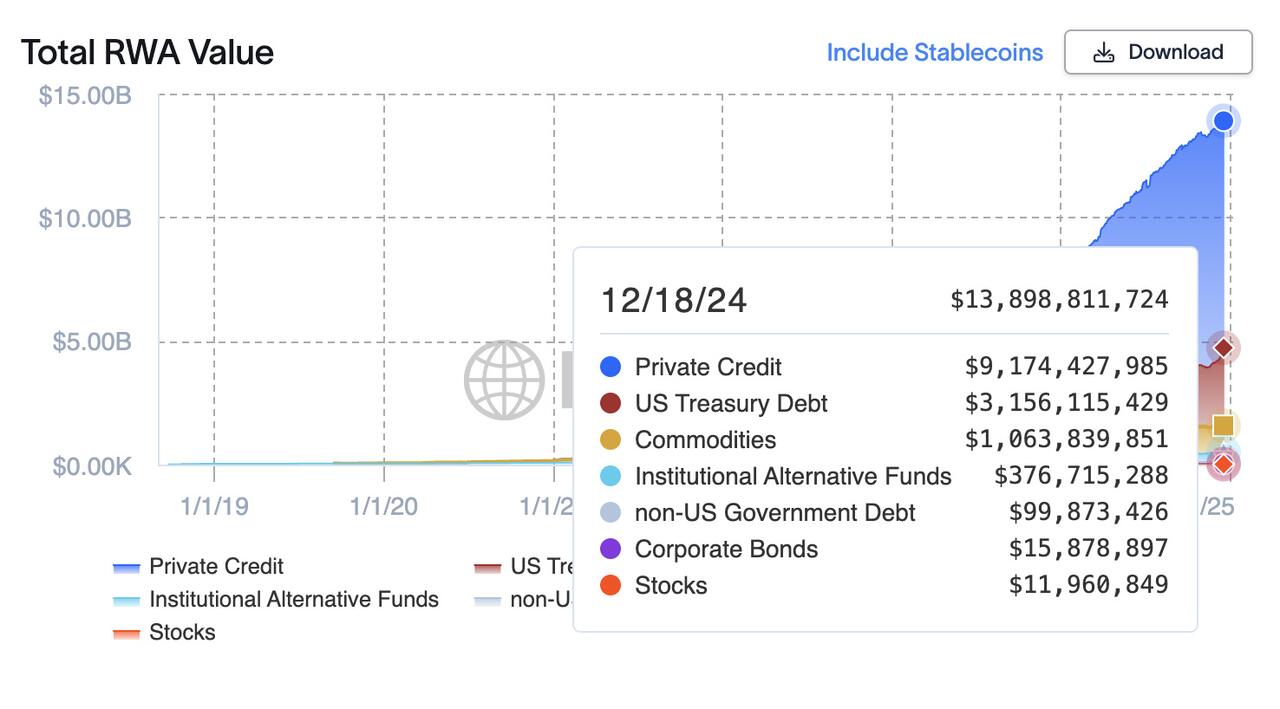The year 2024 will be remembered as a landmark chapter in crypto history. From surging mainstream demand for Bitcoin-regulated financial products to an expected crypto-friendly White House, the Web3 industry has made significant strides despite facing notable challenges along the way.
With its resilience finally paying off, the industry is now setting its sights on another promising year as hopes for regulatory clarity converge with years of innovation and development.
Experts are closely watching emerging trends poised to not only redefine the crypto landscape but also affect the world as a whole. To explore what lies ahead, Cointelegraph has compiled a list of key crypto trends expected to take center stage in the months to come.
RWAs: The use case to watch in 2025
If you have never heard about it, make a note of this word: tokenization. It refers to the art of turning traditional assets into tokens, making them tradable, even in small fractions.
Developers, investors and companies from a range of industries were enraptured by the tokenization of real-world assets (RWAs) fever in 2024, as it unlocks liquidity for traditionally nonliquid assets, such as real estate, and allows people around the world to access investments not always accessible to small investors.
“RWAs are the use case to watch in 2025. The value of tokenized assets will double in the year,” predicts Sergey Gorbunov, CEO of Interop Labs and co-founder of Axelar Network.
Gorbunov’s view is followed by venture capital firm a16z. In its annual report on trends in the crypto and blockchain industry, the VC said that “tokenizing unconventional assets could redefine income generation in the digital age.”
According to data from RWA.xyz, the total value of tokenized assets now stands at nearly $13.9 billion, a 67% jump from $8.3 billion in January.
Real-world assets onchain are now worth over $13.8 billion. Source: RWA.xyz
Financial institutions are now looking at risk frameworks for tokenized assets. In other words, they want to ensure compliance with legal requirements, security risks and market volatility issues are addressed. According to Gurbunov:
“Multiple major financial institutions will develop the risk frameworks needed to issue RWAs that can move across interconnected, public blockchains.”
ID checks by AI agents
Several protocols have been working on ways to provide ID verification onchain over the past few years.
One of the advancements in this field is undoubtedly the emergence of zero-knowledge (ZK) proofs, a technology that allows a human to prove themselves without revealing any personal information. Startups developing this technology include Worldcoin, ONCHAINID and RisedID, to name a few.
Moving forward, onchain biometric verification is expected to be increasingly powered by artificial intelligence. In other words, you will be checked for your identity autonomously onchain by an AI. This may sound like something out of a sci-fi movie, but it’s just an example of AI and blockchain coming together.
“We expect to see automated biometrics and/or government ID checks become the norm, not the exception,” said Civic CEO Chris Hart. He continued:
“As AI agents increasingly act on behalf of users, robust identity verification and authorization frameworks will be crucial for controlling what these agents can do and for how long — especially in financial transactions.”
DePINs to take off
Community-driven energy services, online storage and internet connectivity are already a reality through decentralized physical infrastructure networks, or DePINs.
DePINs allow users to become stakeholders in the network, meaning they can own a piece of the infrastructure they use, thus creating new opportunities for financial inclusion.
Borderless Capital, a venture firm pouring millions of dollars into DePIN protocols, claims the sector holds “the most compelling opportunity” in Web3.
“It is the only Web3 vertical generating revenue and fundamentals with zero correlation to the crypto market, delivering real-world value,” Álvaro Gracia, partner at Borderless, told Cointelegraph.
According to data aggregated by DePIN.Ninja, the market capitalization of DePIN protocols has exceeded $50 billion.
More yields from Bitcoin
Finally, it is impossible to discuss 2025 without mentioning Bitcoin. Once a discredited asset, Bitcoin has made significant strides over the past decade, earning adoption within Wall Street and solidifying its position in the financial landscape.
While developers still struggle with possible upgrades to a network that now has more stakeholders than ever before, startups are exploring alternative ways to unlock yield generation for holders.
“This is the natural need for holders, including the retail and institution. This is the native demand for holders,” said Kevin He of Bitlayer, a Bitcoin layer-2 protocol backed by asset manager firm Franklin Templeton.
According to He, not only investors but also large holders of BTC, such as MicroStrategy, are looking for additional sources of revenue through the fusion of Bitcoin and decentralized finance.
According to He, Bitcoiners could soon generate annual returns of up to 40% on their holdings.








